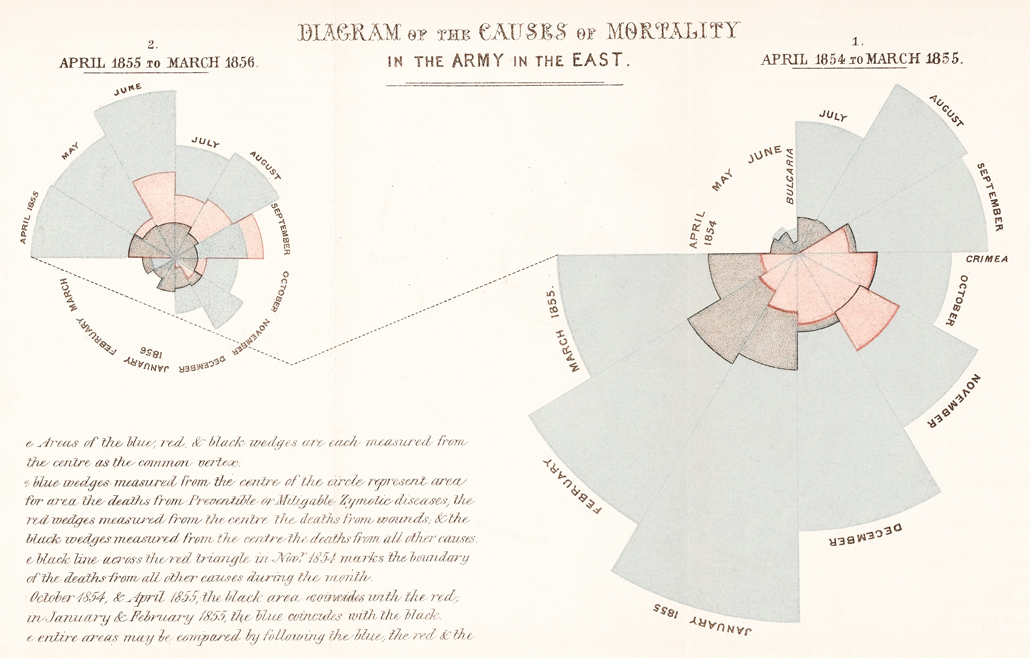


The diagram, which the nurse created herself in 1857, revealed the remarkable impact of improving cleanliness levels: deaths from preventable infection dropped by 99 per cent.Īt the time, the medical profession were largely ignorant about the threat posed by invisible germs and so conditions in hospitals were appalling, leading to thousands of unnecessary deaths from disease and infection.īut the last episode of Extra Life: A Short History of Living Longer – which airs on BBC Four tonight – contrasts Nightingale's success with the earlier plight of Hungarian doctor Ignaz Semmelweis. Now, a new documentary sheds light on how Nightingale's Rose Diagram – which showed how the deaths of British soldiers wounded in the Crimean War plummeted when hospital sanitary conditions were improved. -Edward R.Florence Nightingale is fondly remembered as the 19th Century pioneer who transformed chaotic, unclean hospitals and revolutionised nursing.īut how she did it – by harnessing data and presenting it in a beautiful, persuasive way – is less well-known.-Flatland: A Romance of Many Dimensions.-The Illustrated London News Grand Panorama of the Great Exhibition of All Nations.At a Glance: Selected Works in the History of Data Visualization Reproduced from the Wellcome Library Collection. “Diagram of the Causes of Mortality in the Army in the East.” Reproduced from: Notes on Matters Affecting the Health, Efficiency, and Hospital Administration of the British Army: Founded Chiefly on the Experience of the Late War. As a result of her work, Nightingale became the first female member of the Royal Statistical Society and an honorary member of the American Statistical Association.Ī version of this text has been digitized and is available through the Internet Archive. Nightingale continued to advocate for sanitation reform throughout her life, which her data showed to improve public health. Each of the twelve sections represents one month and each of the three colors represents a different cause of death, which shows the cyclical nature of the data. While similar to William Playfair’s earlier pie chart, Nightingale made each section equal in angle and represented magnitude using the radius of each section. She visualized this data using a polar area diagram, which is now known as the Nightingale Rose Diagram. During the Crimean War (1853-56), in which she earned her nursing fame, Nightingale collected extensive data on mortality rates in the British Army. In addition to founding the modern field of nursing, Florence Nightingale was also a noted statistician.


 0 kommentar(er)
0 kommentar(er)
